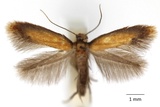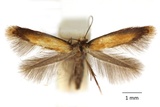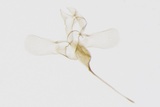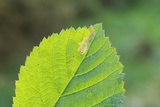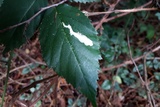Coptotriche marginea (Haworth, 1828) Species
Last modified: Oct. 2, 2025, 12:10 p.m.
A common species throughout Belgium, known from all provinces, but numbers vary considerably between years.
Details
- Classification
- Family: Tischeriidae > Genus: Coptotriche > Species: Coptotriche marginea
- Vernacular names
- Gele bramenvlekmot (NL), Bordered Carl (EN)
- Synonyms
- Coptotriche emyella (Duponchel, 1840)
- First mention in Belgium
- De Fré Ch. 1858. Catalogue des Microlépidoptères de la Belgique. — Annales de la Société entomologique belge 2: 45–162. On page 158 (as T.[ischeria] Emyella. Dup.). view page
- Status
-
Native
Distribution
Caterpillar
Yellowish or greenish; head capsule, first thoracical segment and last abdominal segment blackish.
Mine
A white, elongated blotch mine, continuously enlarged. The inside of the mine is lined with spinning, causing the mine to contract slightly. Frass is ejected through a small whole at the underside of a leaf. The mine of this species could be confused with that of the very rare Coptotriche heinemanni, also occurring on Rubus, but the mine of that species if yellowish-brown.
See also bladmineerders.be
Cocoon/pupa
No cocoon is formed.
Bionomics
The eggs are oviposited on the upperside of a leaf.
The species hibernates in the larval stage, inside the mine, without making a cocoon, and still feeding during winter whenever the temperature is not too low. Pupation in early spring.
Flight periods
The adults fly in two generations a year during May–June and August.
Observed on
- Host plant (species):
- Rubus fruticosus
- Host plant (genera):
- Rubus
The species is monophagous on Rubus, especially Rubus fruticosus.
Habitat
Forest edges, clearings in forests, preferable in the shade of trees.
